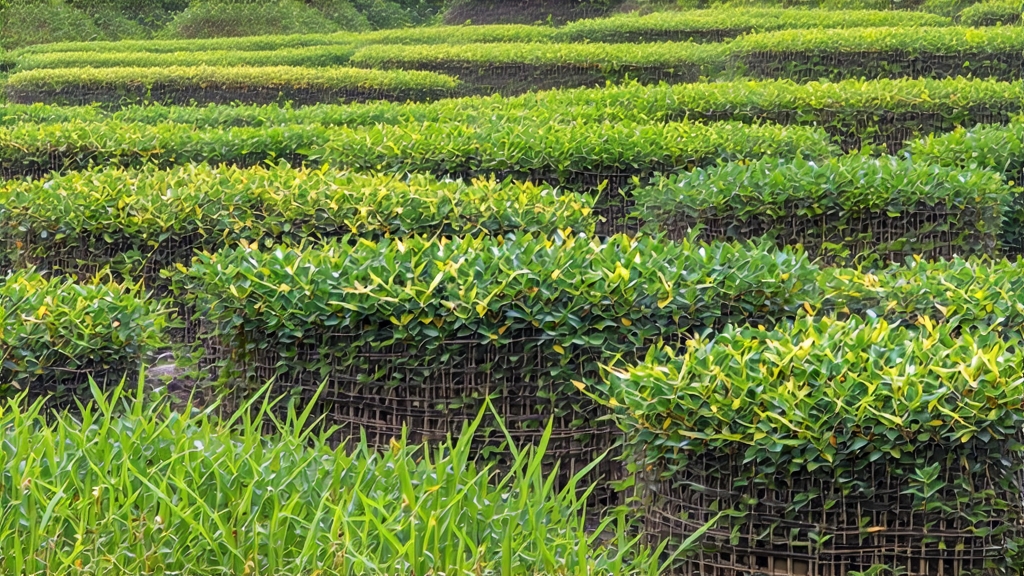
Tucked high on the mist-laden shoulders of Mt. Meng in Sichuan Province, Meng Ding Huang Ya—literally “Yellow Bud from the Summit of Meng”—has been whispered about in Chinese tea circles for more than twelve centuries. Court annalists of the Tang dynasty (618-907) already listed it among the thirteen “tributes of the southwest,” and by the Song (960-1279) it was pressed into tiny golden bricks that travelled the Tea-Horse Road in exchange for Tibetan warhorses. Western tea atlases often overlook yellow tea entirely, yet this bud-only pick embodies the most subtle alchemy in all of Chinese leaf craft: the vanishing art of “sealed yellowing,” a half-fermentation that turns green into amber without ever letting the leaf forget it is still alive.
Meng Ding Huang Ya is not a single clone but a micro-ecosystem of cultivars grafted onto fog-shrouded terraces between 800 m and 1 400 m. The classic genotype is the local “Meng Ding #9,” a small-leaf camellia sinensis var. sinensis selected for its low polyphenol/high amino-acid ratio, which translates into a naturally sweet broth even before processing begins. Around the villages of Gan Shan, Shang Qing, and Bai Sha, growers also keep scattered bushes of the older “Lao Chu Ye” landrace, whose broader buds yield a deeper, orchid-like bouquet favoured by aging tea masters. Both types are picked in a fleeting fifteen-day window from late March to mid-April, when each bud still wears its winter down and the mountain thermometer refuses to rise above 18 °C.
Plucking follows an almost monastic rule: one tender bud, sometimes with an half-open first leaf still hugging the stem, gathered before the valley mist lifts. Experienced pickers work barefoot so as not to bruise the leaf on the climb back; the harvest is laid into shallow bamboo baskets lined with fresh banana leaf to keep the buds cool and breathing. Within two hours the tea must reach the village workshop, a timber pavilion whose slate roof is engineered to exhale the mountain’s perpetual humidity.
The craft sequence that follows is what earns Meng Ding Huang Ya its yellow passport. First comes a gentle kill-green at 160 °C on a slightly domed wok brushed with local rapeseed oil; the oil film prevents sticking yet leaves no flavour, allowing the buds to lose grassiness while retaining a downy silver sheen. When the leaf temperature drops to 35 °C, the “men-huang” (sealed yellowing) phase begins: buds are piled 3 cm deep inside square bamboo trays, covered with wet hemp cloth, and left in a draught-free room kept at 28 °C and 75 % RH. Over the next six to eight hours the leaf slowly re-absorbs its own moisture, triggering non-enzymatic oxidation that turns chlorophyll into pheophytin and converts catechins into theaflavins—molecules responsible for the tea’s luminous golden liquor and rounded, nut-sweet finish. The pile is turned every forty minutes so that each bud yellows evenly; masters gauge readiness by pinching a bud between thumb and forefinger—when it feels like warm velvet and exudes the scent of fresh corn milk, the yellowing is complete.
What follows is a low-temperature roasting unique to Meng Ding: the buds are rolled into soft spirals on a linen cloth, then set on a rattan sieve suspended 60 cm above a charcoal pit fired by local hardwoods—pear, chestnut and a touch of bamboo for a whisper of smoke. The heat never exceeds 55 °C, allowing residual enzymes to continue micro-fermentation while moisture drops to 10 %. A final “foot-treading” refinement—socks washed in tea water to eliminate odour—presses the buds into their signature sword-shaped form, straight as pine needles yet downy as newborn hair. After three days of rest in unglazed clay jars the tea is judged finished: aroma of steamed pumpkin and freesia, colour of polished barley, and a texture so velvety it seems to melt before the tongue can decide whether it is liquid or vapour.
To brew Meng Ding Huang Ya Western readers must first forget black-tea rules. The leaf is dense; three grams suffice for a 150 ml vessel. Water just off the boil—say 85 °C—will scald the down and release tannic edges, so aim for 75